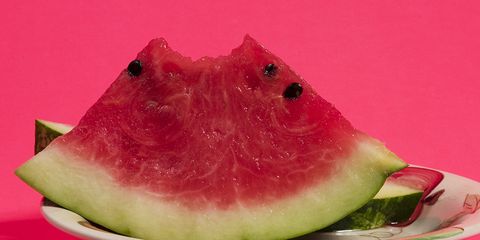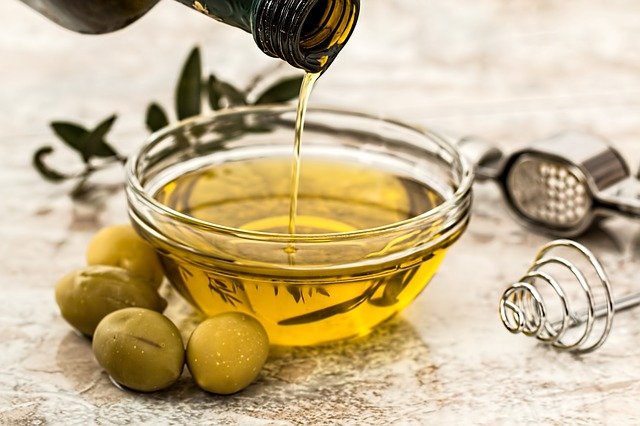
You have probably heard the phrase "calories" more than a million different times. What exactly are calories? In short, they're the units of energy and heat used by the human body. Foods contain varying amounts of calories and different kinds of calories can have different effects on the body.
All calories have some nutritional value. However, there are some foods that are better for you than others. The good ones provide lean protein, healthy fats, and complex carbohydrates. Bad calories on the other side have very little nutrition and are found in processed foods as well as artificial ingredients and sugar. These are not the best choices for your body, and they can cause a variety of health problems in the long run, including headaches, acne, and dental distress. These substances can also cause weight gain and premature death, as well as negative hormone effects.
There is always a compromise. Those limiting their intake of fats and sugars should still eat a variety of foods. A balanced diet is balanced, and it contains both types. It can help you lose weight by eating healthy food. It's important to eat healthy foods, but not all of them. While a 1000 calorie diet is the most effective way to lose weight and achieve your fitness goals, consuming more high-calorie food is better for your health than consuming fewer, healthier ones.
Truth is that there is no "good" caloric intake. It's all about moderation and genetic susceptibility. And all calories are equal in terms of weight loss. Aside from that, calories are needed to burn fat. This is why it's important to cut down on your calorie intake. High-calorie foods are better than high-calorie.
Apart from calories, food composition should be considered. What nutrients each calorie contains is what makes the difference between a good calorie and a poor one. A soda contains 100 calories, while a cup of milk contains more than 100 calories. A cup of shredded leaf lettuce has less than ten calories and a can of soda about 200. To lose weight, you need to be able to distinguish between the two types.

Some foods contain more than 225 calories per 100g, but should be eaten sparingly. Certain high-calorie foods, like oily fish, can actually provide valuable nutrients. Avocados are another example of a high-calorie foods. You should avoid white fish and chicken. Moreover, avoiding high-calorie food should not prevent you from losing weight. Remember that calories are not the only thing that can influence a person’s diet.
A calorie is the unit of energy. A calorie has four hundred calories. A food can contain as much as three hundred calories. This means that food should contain high amounts of calories. A diet with 3,000 calories should not be considered low-calorie if you want to lose weight. A calorie-free diet can help you lose weight.
A calorie represents the energy required to increase a gram water temperature by one degree Celsius. It doesn’t matter if calories are measured in grams or in kilocalories. To be healthy and lose weight, you need to consume at least one thousand calories per day. That's not so much of a problem if you're not counting them. It is important to remember that you don't necessarily need to count calories in calorie-free foods the same way as junk foods.

A calorie is energy. It can either be small or large. This is good because calories are essential for fueling your body. You should also remember that your bodies doesn't store calories - they store them as fat. Healthy foods are the best way to lose weight. However, your body requires certain foods to function properly.
FAQ
What ingredients do I need to purchase to cook?
You don't necessarily need to buy any ingredients. Most grocery stores sell premade sauces and other items you can use as substitutes. Pre-made meals are a great way to save money.
What is the best career path for someone who wants to be a chef? How do I begin my career as chef?
Apprenticeships are a great way to get started if you want to become a chef. Apprenticeships are a way to earn a living while you learn. After you complete your apprenticeship, it is possible to apply for a job as a sous-chef. Sous chefs supervise cooks and assist them with tasks like making salads and desserts. They also supervise the operation of the restaurant.
What skills are required to enter a culinary school?
You will need to know how to cook, understand food safety regulations, and be able work under pressure in order to become a chef. Cooking classes can be taken at high schools and community colleges to learn the basics of cooking. Once you've learned basic techniques, you'll need to find a job working for a restaurant or catering company.
How much does it cost to study Culinary Arts?
Prices for studying culinary arts vary widely. A four-year degree in culinary arts typically costs around $40,000. A two-year associate's level degree can cost less than $5,000. Tuition costs vary depending on which program you choose. Public institutions are more expensive than private institutions.
Do I need to attend culinary school to become a cook?
No. Many chefs started their careers by learning on their own. Some even went to culinary schools to gain practical experience. However, most chefs prefer to attend culinary school because it gives them more opportunities to learn and grow professionally. Culinary schools offer hands-on training which allows students to improve their skills and knowledge of cooking.
What does a culinary program cost?
Costs for culinary school vary depending on where you live, how long you study and which program you choose. Average tuition costs between $10,000 and $30,000. The majority of students graduate with around $20,000 in student debt. Some programs offer work-study, grants, scholarships and grants.
Statistics
- under 10 Kids have been taught that there is special food just for them, and Fiese says that 10 percent of kids will throw a tantrum if they don't get the food they want. (washingtonpost.com)
- You'll be amazed that over 90% of CIA students receive scholarships and grants to finish their culinary studies. (ischoolconnect.com)
- In the United States, the category is estimated at $23.2 billion annually and is growing faster than the market. (washingtonpost.com)
External Links
How To
How to make a perfect omelet
Omelets have always been a favourite food to eat for breakfast. How do you make them perfect? There are many recipes and methods I tried, but none worked. So I wanted to share some tips and tricks so that you can make delicious, fluffy omelets every morn.
It is important to know that eggs can be temperamental when making omelets. It is important that eggs are fresh from an organic market and kept cool until used. They must be kept cool, otherwise the whites will not form properly and the yolks may become runny. Your omelets will look strangely colored if this happens. If you plan to cook the eggs right away, it is best to use room temperature eggs.
Another tip is to separate each egg before adding them to the saucepan. You don't want the white to get mixed with the yolk, as this could cause the egg to curdle.
The egg can burn if it is placed directly on the stovetop. Instead, put the egg in the microwave for 10 seconds before putting it into the pan. The microwave heat is sufficient to cook the egg without overcooking.
Next, let's discuss mixing the eggs. When mixing eggs, it is important to thoroughly beat them. You can do this by turning the bowl of your mixer upside down. Now shake the bowl vigorously. By doing this, the egg is thoroughly mixed with the air in the bowl.
Now comes the fun part - pouring the milk into the mixture. The first step is to pour half of the milk in the beaten eggs. Next, fold the eggs into the remaining milk. Do not worry if you see streaks of egg; they will disappear when the omelet is flipped.
After you have folded the eggs, heat the oil in a pan over medium heat. Once the oil has started to sizzle, turn the heat down to low. Once the oil starts getting hot, add 1/4 cup of butter to the pan and swirl it around to coat the entire surface of the pan. The lid should be carefully opened. Sprinkle salt in the pan. Salt will prevent the omelet sticking to the pan.
Once the omelet has formed, cover the pan again and wait for the top side to set completely. Flip the omelet with a spatula, or flip it upside down. Cook the opposite side for another minute. Serve the omelet immediately by removing it from the pan.
This recipe works best using whole milk. Skimmed milk is also possible.